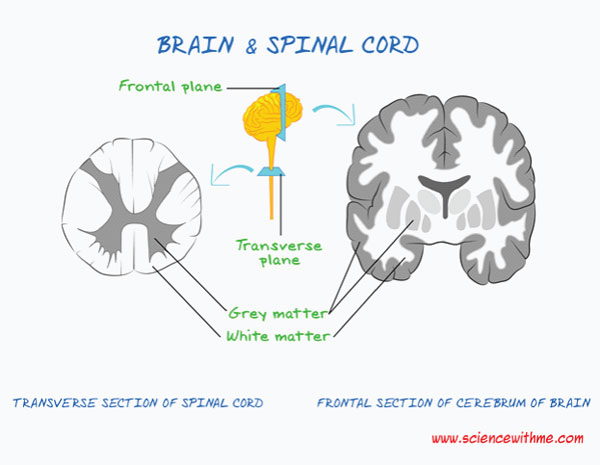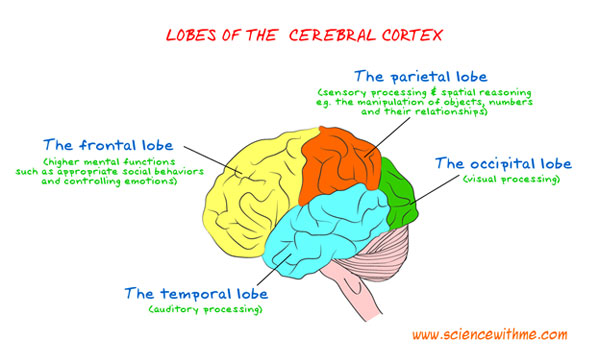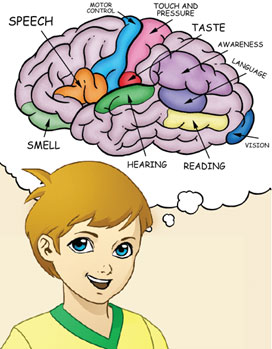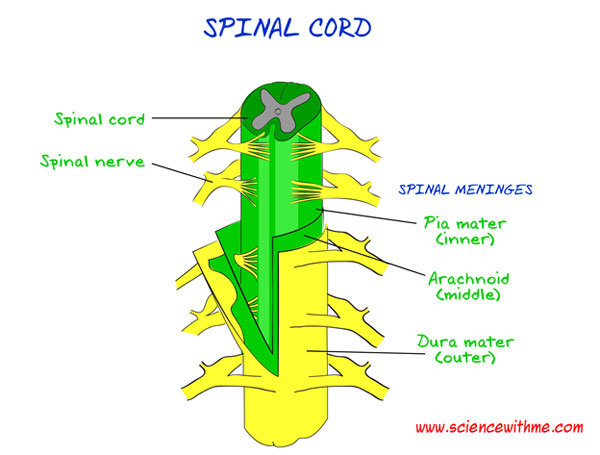Hey Kids! Do you like reading books and imagining adventures of heroes and heroines?
Do you enjoy science experiments and dream of making a new discovery? Are you interested in rugby or baseball or in other sports and do you spend lots of time practicing in order to become an excellent player? Well Luke Rickard, age 10, (the boy in the picture above), lives in Dublin, Ireland and he loves playing rugby, reading books and doing science experiments and science activities at home or in school. In fact he asked his Mom and his teacher to help him learn about his brain last week for Science Week in Ireland and this is what he put together (ok with help from his mom:)) to present to his class. The first thing he discovered was that all of these activities that he loves doing involve the use of his nervous system, which is a network of tissue that sends and carries messages to all the different parts of the body. This system evolved in order for him to sense his environment and respond precisely to changes within and outside of his body. The central nervous system (CNS) consists of the brain and spinal cord while as the peripheral nervous system is made up of those all those other branch-like nerves, big and small, that extend throughout our bodies right out to our internal organs, limbs, muscles, skin, fingers and toes. The peripheral nervous system is divided into two parts:
- The autonomic nervous system located in the base of this brain, or brainstem, preforms involuntary functions (involuntary means we are not conscious of doing them) like the beating of our heart, the digesting of our food and breathing.
- The somatic nervous system, responsible for nearly all voluntary muscle movements as well as for processing sensory information including hearing, touch and sight.
What is the Organization of the Nervous System?
The nervous system uses chemical messengers called neurotransmitters to relay messages from one part of the nervous system to the other. They travel from one nerve cell, or neuron, to the next bringing messages to and from the body to the brain.
 The communication lines in your CNS are called tracts. Tracts make up what are called grey matter and white matter.
The communication lines in your CNS are called tracts. Tracts make up what are called grey matter and white matter.
 When white matter is mentioned, think of bundles of axons with white myelin sheaths. These myelinated tracts connect grey matter areas of the brain to each other and carry nerve impulses between neurons. They function for rapid transmission of stimuli and responses. On the other hand, gray matter is composed of unmyelinated axons, cell bodies, dendrites and neuroglial cells. Neuroglial cells are not neurons but supporting cells that protect or provide nourishment to the neurons. Because it lacks myelin, gray matter has slower transmission compared to white matter. Both the brain and the spinal cord are made up of gray and white matter.
When white matter is mentioned, think of bundles of axons with white myelin sheaths. These myelinated tracts connect grey matter areas of the brain to each other and carry nerve impulses between neurons. They function for rapid transmission of stimuli and responses. On the other hand, gray matter is composed of unmyelinated axons, cell bodies, dendrites and neuroglial cells. Neuroglial cells are not neurons but supporting cells that protect or provide nourishment to the neurons. Because it lacks myelin, gray matter has slower transmission compared to white matter. Both the brain and the spinal cord are made up of gray and white matter.
What is the Brain?
Your brain sits, in the cranium, or skull and is located at the anterior end of your spinal cord. It serves as the primary control center of your body. It is able to receive information, integrate, store and retrieve it. When you need data, it is also able to issue or send information. Similar to the spinal cord, the brain is covered by bone (skull) and meninges. The cerebrum is the largest part of the brain. In the core of the cerebrum, is tissue called white matter that passes messages between different areas of grey matter.
 The outer layer of the cerebrum is called the cerebral cortex and is often referred to as grey matter of the brain. The cerebral cortex can be divided into four lobes, the temporal lobe, the occipital lobe, the parietal lobe and the frontal lobe, which are responsible for what are known as “higher functions”.
The outer layer of the cerebrum is called the cerebral cortex and is often referred to as grey matter of the brain. The cerebral cortex can be divided into four lobes, the temporal lobe, the occipital lobe, the parietal lobe and the frontal lobe, which are responsible for what are known as “higher functions”.
 Higher functions are things like sight, movement, sensation and language as well as thoughts and calculations.
Higher functions are things like sight, movement, sensation and language as well as thoughts and calculations.

 A neat fact about the cerebral cortex is that each side of it communicates with the opposite side of the body - in other words, if you touch something with your left hand, the right side of your cerebral cortex will sense it. Similarly, when the right side of your cerebral cortex sends out a message, or impulse, it will go to the left side of your body. The opposite holds true for the right side of your body - it is wired to the left side of your cerebral cortex. Underneath the cerebral cortex lie the subcortical structures. The subcortical area consists of several smaller sections that are responsible for relaying information from all the parts of our bodies to the cerebral cortex and, then, sending responses from the cerebral cortex back out to the body.
A neat fact about the cerebral cortex is that each side of it communicates with the opposite side of the body - in other words, if you touch something with your left hand, the right side of your cerebral cortex will sense it. Similarly, when the right side of your cerebral cortex sends out a message, or impulse, it will go to the left side of your body. The opposite holds true for the right side of your body - it is wired to the left side of your cerebral cortex. Underneath the cerebral cortex lie the subcortical structures. The subcortical area consists of several smaller sections that are responsible for relaying information from all the parts of our bodies to the cerebral cortex and, then, sending responses from the cerebral cortex back out to the body.
What is the Spinal Cord?
The spinal cord is a long, thin, tubular bundle of nerves, tissue, and cell cord, which flows out from the base of his brain. You can think of the spinal cord as an expressway between the brain and the peripheral nervous system. It also has sensory and motor neurons that are responsible for your reflexes (e.g. knee jerk reflex). The spinal cord is enclosed within a canal made by your vertebral column. Therefore, the spinal cord is protected by your bony vertebrae, ligaments and meninges. The meninges are named dura mater, arachnoid, and pia mater.

What are the Parts of the Brain?
The brain has many parts, which are known to anatomists and doctors. However, it can be simplified into the following: the hindbrain, the midbrain and the forebrain. The hindbrain contains the pons, medulla oblongata, and cerebellum. The midbrain contains the tectum. The forebrain contains the cerebrum, thalamus, hypothalamus, pineal gland, pituitary gland and the limbic system.

- Cerebrum. The cerebrum is considered the most advanced part of the brain. It has elevated parts called gyri and depressions called sulci. This is the part of the brain responsible for integrating the information you receive. It is also responsible for commands. For instance, when you read, the cerebrum processes and integrates the stimuli sent by your visual pathway so that you are able to recognize letters and words. You are using your cerebrum as you read this.
- Cerebellum. The cerebellum is responsible for integrating sensory signals from your ears, eyes and muscles, and motor signals from your cerebral cortex. It helps you maintain balance and equilibrium. People who have a damaged cerebellum (such as alcoholics) can have peculiar walking stances or can lose their sense of balance.
- Pons. The pons or “bridge” is a major hub for information traffic. It passes on information to the cerebellum and cerebrum.
- Medulla oblongata. This part of the hindbrain is responsible for many involuntary functions including respiration and circulation. It also functions in signalling sleep. When a person’s medulla has been damaged, a declaration of “brain-dead” may be expected from a doctor.
- Thalamus. This part of the brain serves to coordinate sensory signals and relays them to the cerebrum.
- Hypothalamus. This part of the brain is responsible for homeostasis* and internal control. It controls thirst, hunger and emotions.
- Limbic System. The limbic systems functions for memory and emotions. For instance, the amygdala (a small, almond shaped mass of nuclei located in the temporal lobes of the brain) is responsible for fear. This part of the brain is related to the olfactory lobes. This is the reason why you feel certain emotions when you smell something that evokes memories. The limbic system is sometimes called the emotional-visceral brain because of its association with emotions.
What is Memory?
Memory is used to refer to how the brain is able to store and retrieve information as needed, based on previous experience. Your memory allows you to learn and adapt to your environment. For instance, you might have burned your finger when you played with matchsticks. From then on, you would remember that burning event whenever you see matchsticks. This is memory in action. There are several types of memory. Short-term memory refers to the ability to remember something that happened several seconds or hours beforehand. Long-term memory refers to the ability to store and retrieve information that occurred months or years ago. When you have a memory loss, your condition is called amnesia. Amnesia can occur in diseases that affect the brain, such as Alzheimer’s disease and Parkinson’s disease.
Science is fascinating – right?
Luke really hopes you enjoyed this science article as much as he enjoyed preparing it for himself and for the kids in his class. He is happy that you can learn from it too! Homeostasis:* This is the ability of the body to adapt to different conditions and remain in equilibrium. For example, the body regulates its temperature by sweating to keep cool and shivering to stay warm.
